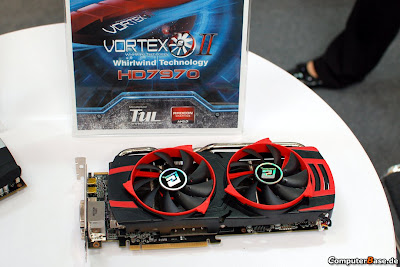Even though barely a year has passed since the introduction of the original G1.Sniper, Gigabyte has recently unveiled the third iteration of this motherboard which is based on Intel’s upcoming Z77 Express chipset.
This G1.Sniper 3 seems to be Gigabyte’s most advanced solution for LGA 1155 processors, and so far it’s the only Z77-based motherboard we have seen to support 4-way CrossFire/SLI configurations.
This is made possible thanks to the integration of a PLX PEX 8747 bridge chip, which takes the 16 PCI Express lanes available in Intel’s third generation Core processors and splits them into four PCIe x8 links. This chip is housed right under the middle motherboard heatsink.
Besides the four PCI Express x16 slots, the G1.Sniper 3 also includes a pair of PCIe x1 slots, a 32-bit legacy PCI slot, as well as a mSATA 6Gbps slot.
Additional storage devices can be attached to the board using the six SATA 6Gbps ports available (two driven by Intel’s Z77 PCH) or the remaining four SATA 3Gbps ports.
Like all the other G1-Series solutions before it, the G1.Sniper 3 also packs an on-board Bigfoot Killer E2100 network controller and Creative audio.
This time however, Creative X-Fi sound chip was replaced with a more powerful Sound Core3D implementation also featuring better ground-isolated amp circuitry.
Moving to the rear of the board, we get to see that Gigabyte has included all the connectors that one would expect to see in such a high-end motherboard, like six USB 3.0 ports, dual Gigabit Ethernet, as well as D-Sub, DVI, HDMI and DisplayPort video outputs.
According to TechPowerUp, power to the installed CPU is delivered via a 15-phase VRM. No details regarding the release date or the pricing of the G1.Sniper 3 motherboard are available at this point in time.



 3/07/2012 10:30:00 PM
3/07/2012 10:30:00 PM
 dannzfay
dannzfay






































